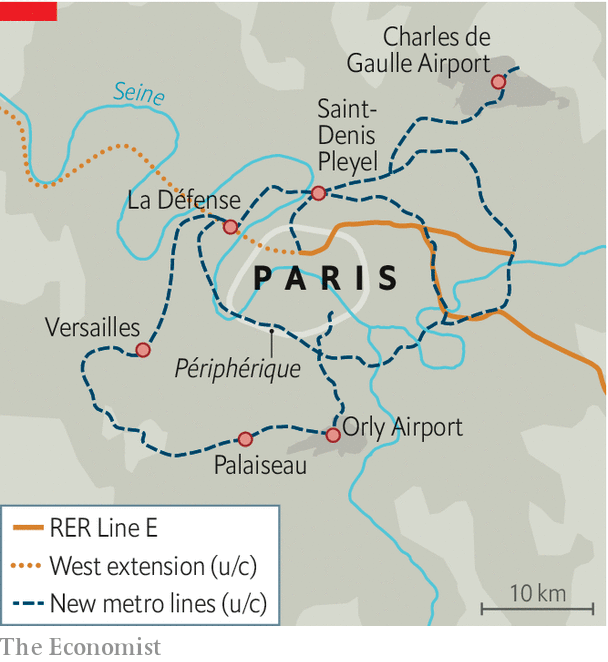
Deep in the ground beneath the western Paris business district, workers are excavating rubble from 22-meter shafts. These will take 60 supporting pillars for a vast new train station that will be buried 35 meters underground.
Welcome to one of Europe’s biggest infrastructure projects: an ambitious plan to encircle Paris with a new metro loop, and shift the way people think and move about the capital.
The new station at La Défense, built as part of the westward extension of the E line, will link up to a huge looping network known as the “Grand Paris Express”. Most of the French capital’s existing rail and metro lines are there to carry people in and out of the city center. The new underground loops, by contrast, will focus on moving them around the suburbs.
When complete, the new driverless underground network will feature 68 new stations and cover 200km, nearly twice the length of London’s new Crossrail.
Like Crossrail, the new Paris express has faced delays and cost increases. A report by the French national auditor, in December 2017, pointed to an estimated total cost of €38.5bn ($43bn), up from €19bn in 2010, when the publicly financed project began.
Last year, the government finally acknowledged that only part of the network will be finished by 2024, when Paris hosts the Olympic games. A new fast link to Charles de Gaulle airport may also not be ready by then. Part of the southern loop will not open until 2030, or later still.
Naturally, everyone blames everyone else, easy to do in a city with overlapping layers of local and regional government. However, in time, the effect will be radical. The new network will help commuters who live in one suburb and work in another and now must pass through the center. This will relieve pressure on city-center lines, and will give a boost to suburban business hubs.
The new network, says Jean-Louis Missika, deputy mayor for planning at the capital’s town hall, marks the end of a model that “assumes Paris is the center of the world”.

From The Economist
